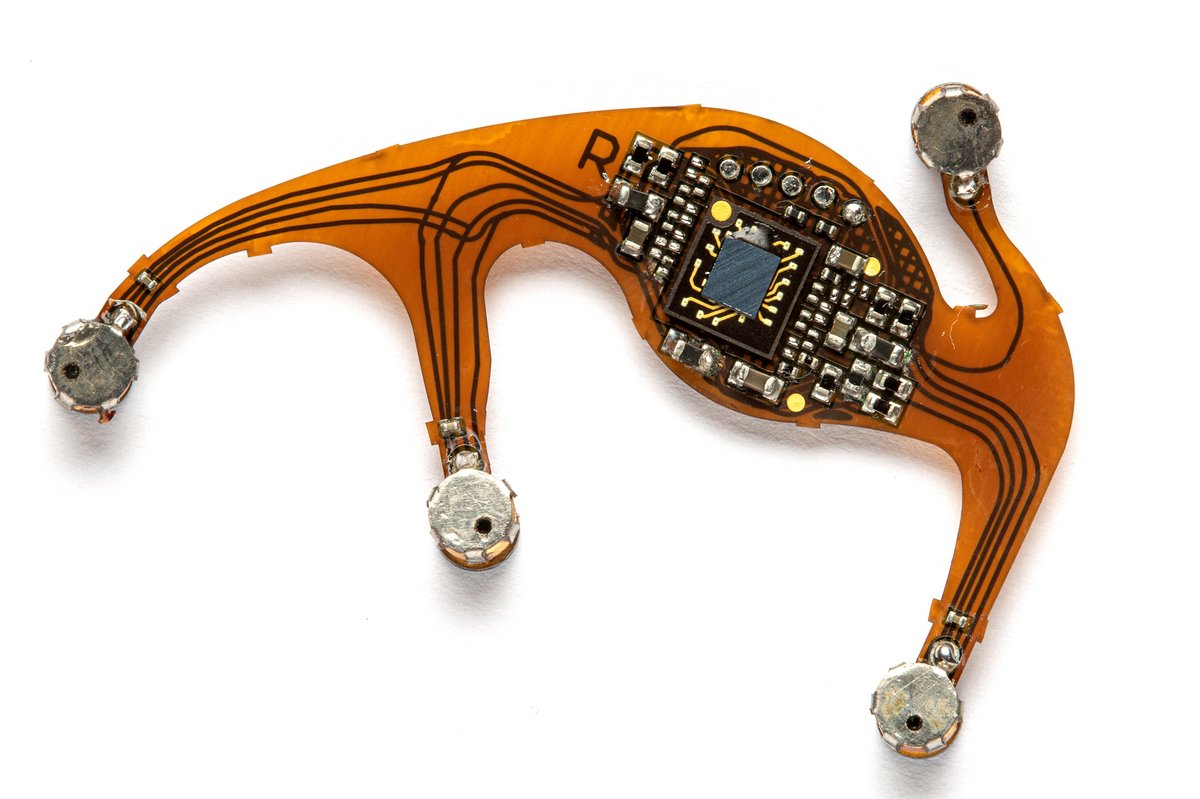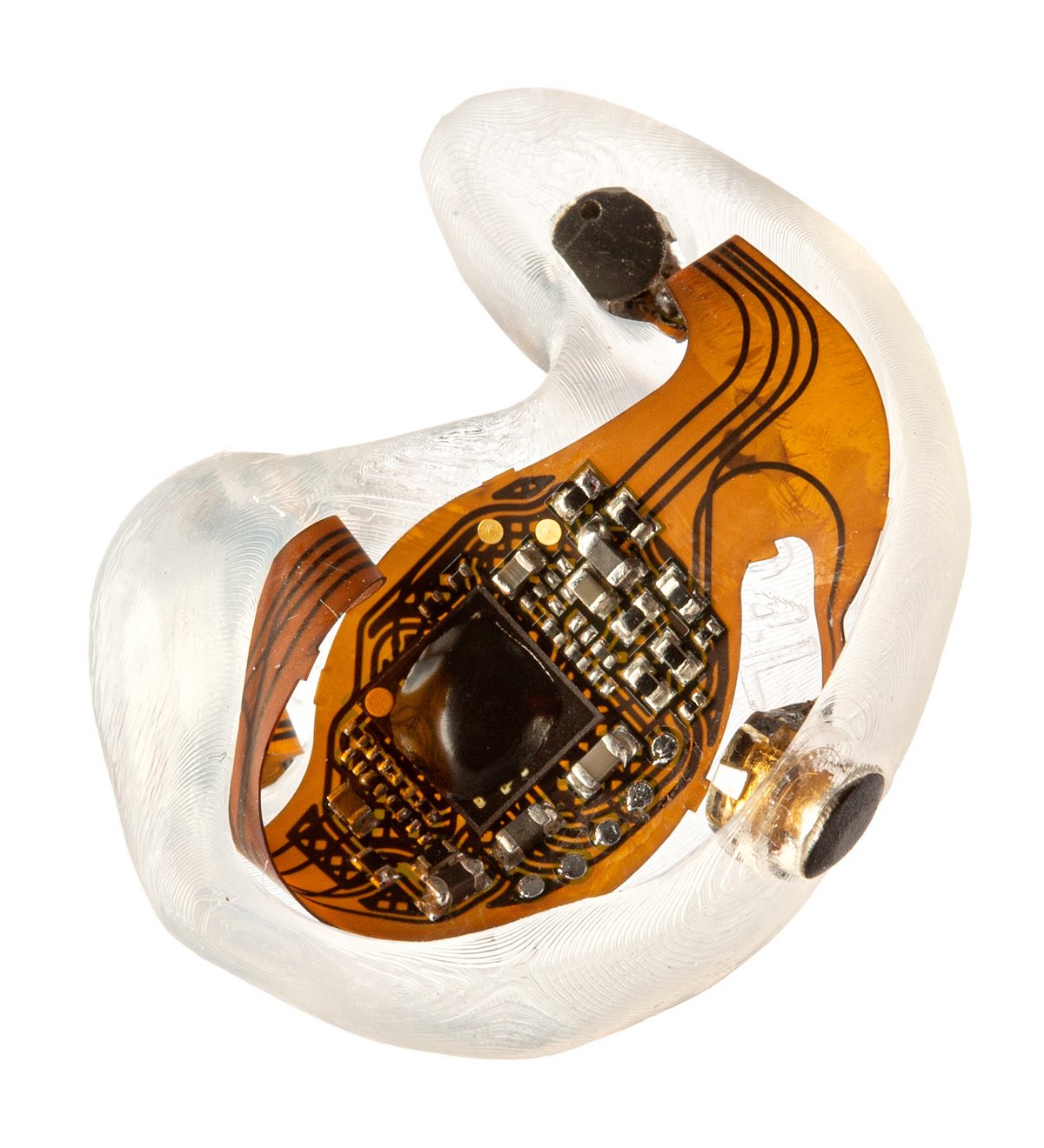This research field concerns the continued development of the ear-centered sensing research platform. For the ear-EEG, this entails continued development of the dry-contact electrodes, the shielding method, the electronic instrumentation and the ear-pieces.
Related to the electronic instrumentation, we will e.g. research methods to improve the low-frequency noise characteristics by extending the chopper-stabilization technique used in the current amplifier, improve the common-mode feedback technique, investigate methods to avoid the ground electrode, and methods for continuously monitoring of the electrode-body interface (e.g. impedance and half-cell potential monitoring).
Other sensor modalities will also be investigated and embedded into the research platform. Examples includes: body-coupled microphones to record structure-born respiratory and cardiovascular sounds; optical spectroscopy sensors to measure e.g. oxygen saturation; inertial motion sensors to measure body movements; and optical sensing of tympanic membrane motions. An important aspect of this is to investigate optimal placement and mechanical integration, support and suspension of sensors and electrodes into the earpiece, because these are crucial important aspects for both measurement performance and user comfort.

